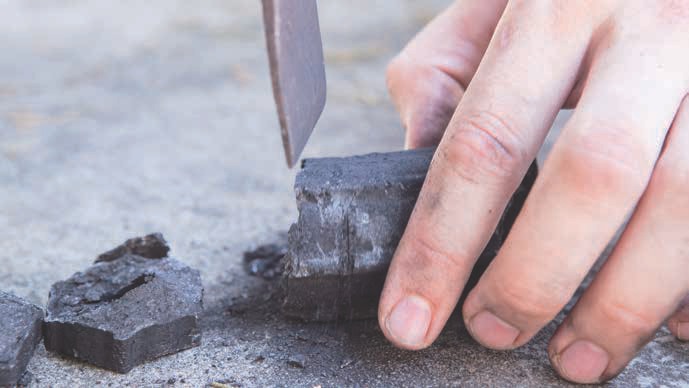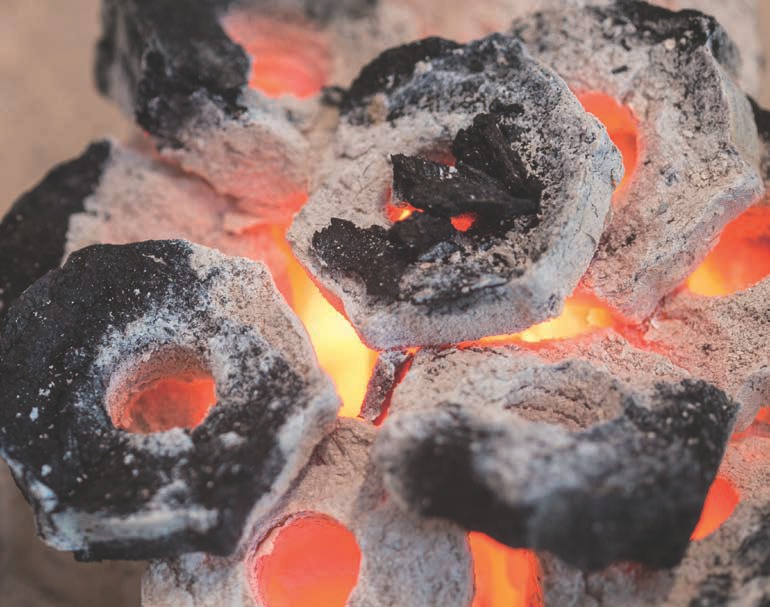
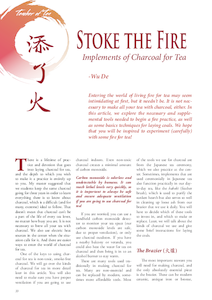 |
|
There is a lifetime of practice and devotion that goes into laying charcoal for tea, and the depth to which you wish to make it a practice is entirely up to you. My master suggested that we students keep the same charcoal going for three years in order to learn everything there is to know about charcoal, which is a difficult (and for many, extreme) ideal to follow. That doesn't mean that charcoal can't be a part of the life of every tea lover, no matter how busy you are. It is not necessary to brew all your tea with charcoal. We also use electric heat sources in the center when the situation calls for it. And there are easier ways to enter the world of charcoal for tea.
One of the keys to using charcoal for tea is non-toxic, smoke-free charcoal. We will go over the kinds of charcoal for tea in more detail later in this article. You will also need to make sure you have proper ventilation if you are going to use charcoal indoors. Even non-toxic charcoal creates a minimal amount of carbon monoxide.
Carbon monoxide is odorless and undetectable by humans. It can reach lethal levels very quickly, so it is important to always be safe and ensure adequate ventilation if you are going to use charcoal for tea!
If you are worried, you can use a handheld carbon monoxide detector to monitor your tea space (our carbon monoxide levels are safe, due to proper ventilation), or only use charcoal outdoors. If you have a nearby balcony or veranda, you could also heat the water for tea on charcoal and then bring it in to an alcohol burner to stay warm.
There are many tools used traditionally in making charcoal for tea. Many are non-essential and can be replaced by modern, sometimes more affordable tools. Most of the tools we use for charcoal are from the Japanese tea ceremony, which we also practice at the center. Sometimes, implements that are used ceremonially in Japanese tea also function practically in our dayto-day tea, like the haboki (feather brush), which is used to purify the sunken hearth but also serves so well in cleaning up loose ash from our brazier that we use it daily. You will have to decide which of these tools to invest in, and which to make or replace. Later, we will talk about the kinds of charcoal we use and give some brief instructions for laying the coals.

The most important teaware you will need for making charcoal, and the only absolutely essential piece is the brazier. These can be modern ceramic, antique iron or bronze, rattan baskets with ceramic lining that you can carry away from an outdoor session without waiting for it to cool down, clay braziers, etc. There are so many varieties, and most of your decision will be an aesthetic or financial one. Of course, certain braziers function better than others, with better airflow for the coals, but most of your choice will be based on your style and what you can afford. If possible, make sure the airflow is strong, as the aim of using charcoal is to have as lively a flame as possible, and thereby heat the water as quickly as possible. Antique Japanese braziers are usually the best. Japanese craftsmanship was exquisite (and still can be). Antique braziers are often gorgeous and well designed, obviously built to last, and have the right airflow for their design. You may also want to account for how and where you will be using the brazier - whether on a table or the ground - as the height and size will matter. Also, ceramic braziers can break and have to be handled with more care. There are also cheap metal braziers that you can find. One way to make a nice-looking and affordable brazier is to buy a cheap metal brazier with handles, light the coals in it and then place it on a small board inside a nice-looking plant pot. You can adjust the height by using varying thicknesses of wood, so that the kettle sits on the metal brazier just inside the pot. Decoratively, the ceramic plant pot then becomes the brazier.
There are essentially two kinds of brazier, and knowing the difference between them will matter when making your choice: open and closed.
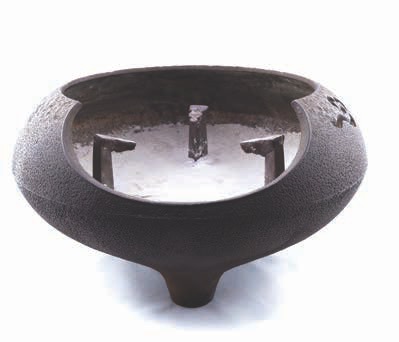
Open braziers are wide and open inside, without ventilation holes. They can use more kinds of charcoal and have more of a range of use, but the charcoal will have to be properly arranged. You will need a tripod or a hanging rod/chain for the kettle in order to use an open brazier. Using an open brazier requires more skill, as the charcoal will have to be arranged in a pile that is conducive to your kettle, brazier and brewing style, but they have more versatility and can be used with any kind of charcoal. Using an open brazier will also require knowledge of other skills, like using hibashi (metal chopsticks for charcoal).
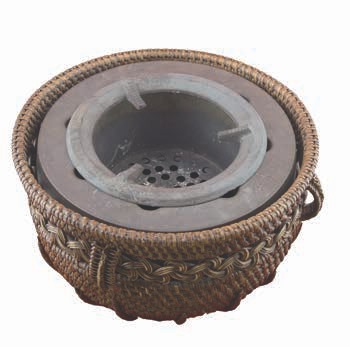
Closed braziers, on the other hand, have an insert for coal. This is usually a kind of sleeve made of metal or ceramic that you place the kettle on top of. Make sure the design allows for proper airflow under your kettle - ideally with air hole(s) in the body to increase ventilation. Closed braziers are often smaller, lighter and more portable so they can be placed atop a table as well. They are also much easier to use, as you can fill them with charcoal and start them (outdoors since the starter will always smoke) and then carry them to your tea space before they get hot. There is less technique to using them, as you can essentially just stuff them full of coal. We usually recommend that people start their journey into charcoal with a closed brazier, which is much simpler and requires fewer tools.

Haboki (羽箒, feather brush): In traditional Japanese tea ceremony, after the kama is removed from the sunken hearth (Ro), the rim is ritually cleaned with this feather brush. This is done again after arranging the charcoal. However, at the Hut, we also use them to clean the brazier of ash before starting any ceremony. There are different styles, with wider or longer feathers for different seasons. Most of them are recovered eagle, crane or hawk feathers.
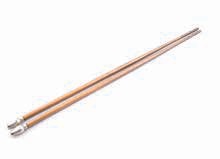
Hibashi (火箸, metal chopsticks): We light our charcoal outside, using a fire-starter or gas stove depending on the charcoal, and then carry it to the brazier with a pan. We then arrange it using the Hibashi. Traditionally, these were used to arrange unlit charcoal into the sunken hearth. This means some of them aren't meant for lit coals and can get hot. The winter ones have mulberry wood handles. When the others get too hot, you can stop and wipe them with a rag. These aren't necessary when using a closed brazier, as you can light it and then carry the brazier itself to your tea space.
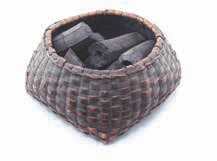
Sumitori (炭取, container for coal): In a Japanese tea ceremony the charcoal container is usually a basket, and is used to carry in all the equipment used in arranging the charcoal. We have one of these baskets around our tea space with extra charcoal we can use to add to our coals during extra-long sessions. We would also include the charcoal pan as a kind of sumitori, though. We use it to transport unlit charcoal outside to be broken and lit, and then to carry lit charcoal indoors to be arranged. We made ours out of a kitchen pan with a wooden handle (so it won't get hot), which we then decorated.

Hai (灰, ash): After time, you will develop a continuous flow of ash from used charcoal, but you will want to start out with a good layer if you are using an open brazier. (This is another place in which closed braziers are better, since they don't need any ash). The best ash comes from burnt rice paper. After you start accumulating an excess of ash, it can be used for many wonderful tasks: like cleaning dishes or pans, rinsing/ scouring teaware and other cleaning.

Haisaji (灰匙, ash spoons/scoops): These come in all shapes and sizes. We use them in many different ways: to scoop out excess ash for use in cleaning, to compact the ash in the brazier, etc. You can find a set of different sizes, which will be very useful.
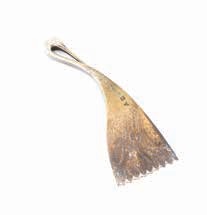
Rake (灰耙): We use this to rake up the excess ash in the open brazier; and also to draw nice patterns in the ash, making the tea space more beautiful - even in the places that guests rarely look.
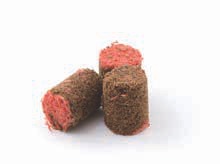
Fire-starter (火種): For some kinds of charcoal, we use a gas stove to light them. For others, you will need a fire-starter. These are compressed sawdust, essentially. Try to find ones that are not coated in wax and are more environmentally friendly. The wax smokes, smells unpleasant and melts onto your coals.

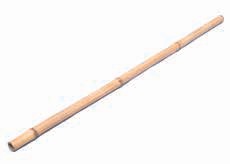
Fan (扇子)/ hollow bamboo tube (竹管): It is nice to have a couple different ways of bringing the flames out of your charcoal arrangement - whether using an open or closed brazier. If you light the coals outdoors and then bring them in, the new arrangement will take some time to get going. Sometimes it helps to fan or blow on the coals until you have a lively flame. We use both these tools often, though we usually fan a closed brazier and blow through the bamboo tube on the open arrangement. Our tube is a simple piece of bamboo with the nodes hollowed out.

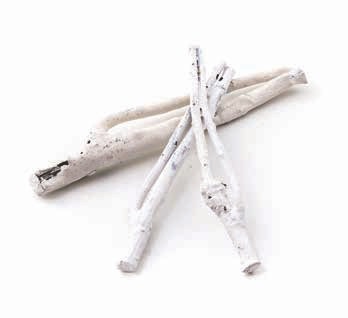
Sumi (炭, charcoal): "Sumi" is the Japanese word for charcoal. Japanese charcoal has been produced for centuries. Beginning in the eighteenth century several types of charcoal were produced to be used in the tea ceremony and the processes were refined. Black, hardwood charcoal is made by firing the wood at temperatures between 400 and 700 degrees Celsius. The kiln is then sealed until the burning stops and the heat dies slowly over a period of time. Black charcoal is often soft and retains some bark. Many kinds of trees have been used over the years, including the famous oak charcoal from Osaka prefecture. Japanese charcoal for tea ceremony is made in several shapes and sizes, used together to create a beautiful arrangement. The oak burns well and long. There is often a piece of "branch charcoal" added, which is called "edazumi". It's a branch of oak, azalea or even camellia coated in lime to help start the coals. Such an arrangement will be gorgeous and produce an excellent, lively flame. The downside is that this kind of charcoal is expensive and the learning curve is higher, as it will take you time to learn how to arrange it properly.
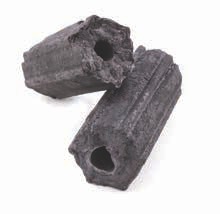
Coconut Husk Charcoal: Charcoal made from compressed coconut husk is an environmentally-friendly and easy way to start using charcoal for tea. It is often easier to source non-toxic coconut husk charcoal than other kinds of coal. You will have to light it on a gas stove and then transfer the hot coals to your brazier. Since it is compressed, the pieces will all have a uniform size and shape - a hexagon with a hole in the center. This makes it easier to arrange, as you can use a chisel or cleaver to chop the pieces to the desired length and then light them. After they are lit, you can then transfer them to your brazier - piling them in if it is a closed brazier and arranging them if open. This is the charcoal students start learning from at the Hut. The ease of use and long burning time of coconut husk charcoal make it the best choice to start learning about using coals for tea.
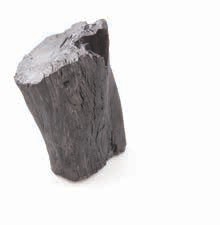
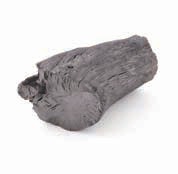
White Charcoal: White charcoal is made by charring the wood at a relatively low temperature for some time, then, near the end of the process, raising the kiln temperature to about 1000 degrees Celsius to make the wood red-hot. The charcoal is then pulled out and quickly smothered with a covering of powder to cool it. The powder is a moist mixture of earth, sand and ash, and gives a whitish hue to the charcoal surface. The rapid rise in temperature, followed by a rapid cooling, incinerates the bark and leaves a smooth, hard surface. If you strike it, you'll hear a clear, metallic sound. White charcoal is excellent for a variety of uses. We add a little piece to the center of our arrangement every day. It makes the coals burn longer and hotter, changing the water texture noticeably. White charcoal is more expensive, but if you only use a small piece in the center of your arrangement, it will last a long time. You can't start it on gas (a gas flame would cause this kind of charcoal to crack and pop apart). So just place a raw piece, sawed with a hacksaw, in the center of your arrangement.

Dragon Eye Fruit Tree Charcoal: In Taiwan, tea is roasted using hardwood charcoal from the dragon eye tree, which is also renowned for its delicious fruit. It produces a great flame that also boils amazing water for tea. This is the most beloved of all charcoal at our center. It burns with a lively flame and has a glorious odor. It takes some skill to arrange the large pieces in an open brazier, but once you do it can heat up some amazing water. If you learn how to manage the temperature, covering pieces with ash when you aren't using it, such a hardwood coal can burn for days. Like the wonderful flavors it imparts to roasted oolongs, this charcoal makes great water for tea. This kind of coal also cannot be started on a gas flame, so you will need a fire-starter to get it going. We have also found that you can age dragon eye charcoal. We have some twenty-year-old pieces that we reserve for the best tea sessions, as they produce amazing water.

Olive Pit Charcoal: When using a small, closed brazier there is no better charcoal than olive pits. It is great for maintaining temperature on a smaller kettle that water is transferred to. In this way, you can boil a large kettle outside on a larger charcoal fire and then pour the water into a small kettle on a little brazier, as you would with a gas and alcohol setup. The oils in the olive pits make the flame burn strong and concentrated. They also last a surprisingly long time, given how small they are. We often use olive pit charcoal when brewing traditional gongfu tea with a small, ceramic side-handle kettle on a traditional Mulberry Creek stove.
There really is a lifetime of skill in each and every aspect of tea, which is why it is a discipline of mastery (gongfu). Most of what is needed to master charcoal arranging for tea will have to be learned in practice, and will depend greatly on whether you are preparing bowl tea, gongfu tea or a Japanese tea ceremony. The easiest way to get started is to get a closed brazier. You may want to wash off your coals when they arrive to remove dust. Simply hose them off with a spray nozzle and let them dry out in the sun. In that way, you can also learn to pick out the pieces that are misfired. Look for shiny inconsistencies. These pieces can be used to purify the air, be placed around your puerh storage cabinet or even in your water urn. Then, pack the closed kettle around a fire-starter, using a long lighter to reach in and get it going. After the fire-starter burns down, fan the coals until you have a nice flame and carry the brazier in to your tea space before it gets hot (unless you choose to heat your kettle outdoors).
The most important thing about your charcoal arrangement is what is called "martial heat". The ideal is to heat the kettle as quickly and evenly as possible. When the heat is spread evenly it makes smoother water. For that, you will want a nice, lively, flaming arrangement of coals. Also, the flames greatly reduce the carbon monoxide, making an indoor arrangement healthier (you will still need proper ventilation, of course). The greatest heat isn't in the charcoal, actually; it is in the spaces between the pieces. There is a great and deep Daoist wisdom in that. As you practice, pay attention to the way the pieces interact with each other. You will soon realize that most of the heat comes from the spaces between the coals.
Be careful and have fun harnessing fire for tea. Treat fire with respect and love, as you do water and Tea. The rewards are more than better heat, for this alchemy changes your heart!


